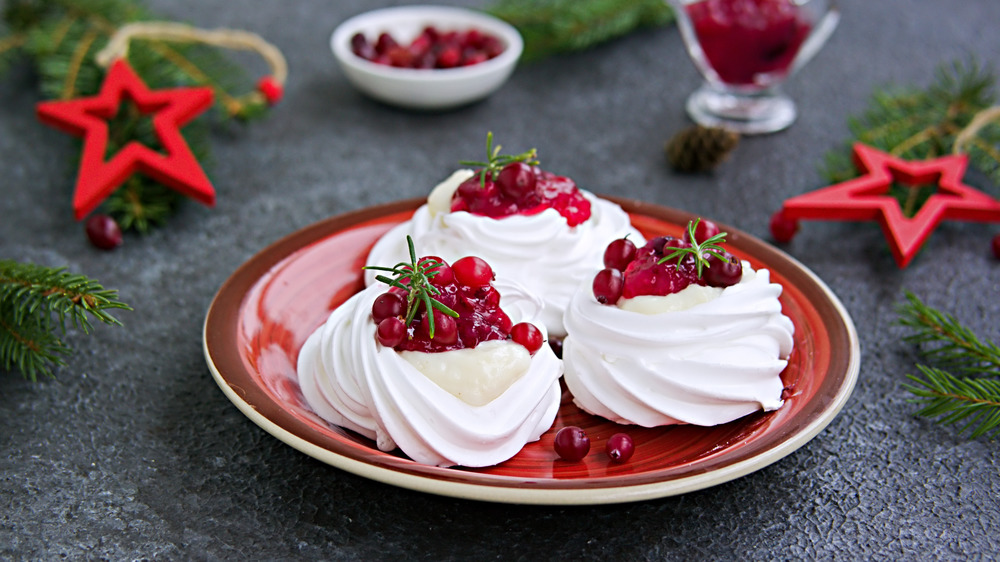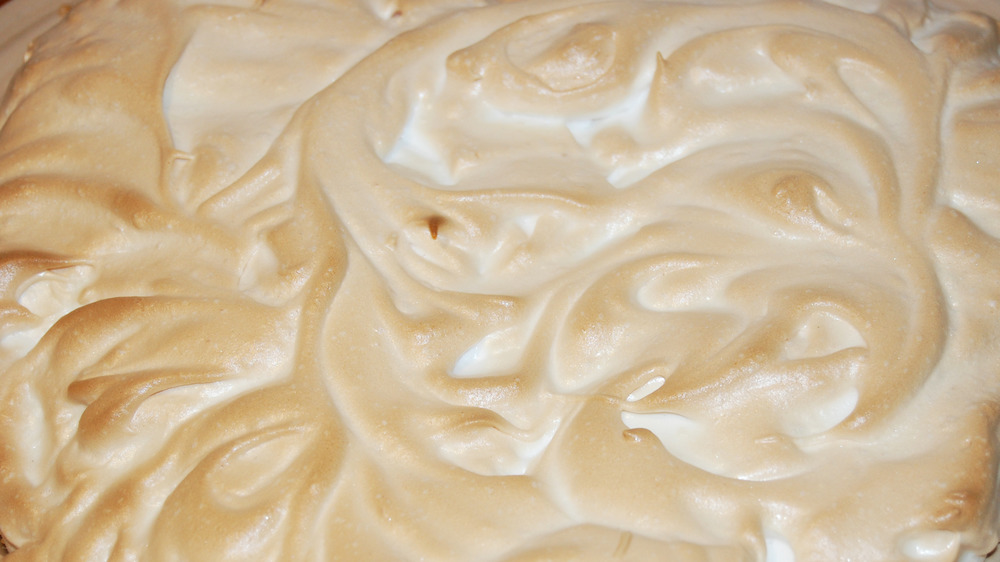The Biggest Mistake You're Making With Meringue
When making a traditional meringue, you're probably familiar with the recipe of egg whites, cream of tartar, and granulated sugar (via Eggs). These simple ingredients are combined to make light and fluffy, crispy but sticky desserts often topped with fruit and whipped cream, such as the Christmas Pavlova traditionally eaten in New Zealand and Australia. Making meringue might require simple pantry ingredients, but the process itself often goes wrong, yielding a soggy and gloppy mess that's less than appetizing.
Fortunately, experienced bakers have some tips to help. Take a page out of The Great British Baking Show and weigh your ingredients instead of counting them. "Use weight or volume for your egg white measurements, not egg count," writes one Reddit user. "If you're getting eggs that aren't sized, your eggs can range from [approximately 46] grams to 60 grams (including the yolk), and this can affect your result, especially if you're doing large batches." Traditional methods also call for purity of ingredients, and that means no yolk. To achieve that, the Redditor recommends using a very clean, very dry bowl, warning that a single speck of yolk would spell disaster for your meringue.
In reality, the biggest mistake that you are making is tossing out an entire bowl of meringue for a tiny mistake.
Meringue is all about the peaks and valleys
Turns out the avoidance of egg yolk, or any other fat, is derived from "The Fat Speck Myth" (via Joe Pastry). The idea is that in a similar manner to how dish soap breaks down grease, fatty egg yolks will break down the bubbles of whipped egg whites. In more scientific terms, the concern is that the lipids will disrupt the protein bonding process, resulting in runny eggs instead of stiff peaks and valleys. In reality, once the egg white protein starts forming a mesh, a couple of lipids from the yolk don't really have anywhere to go, causing no net effect. Don't believe us? Just check the ingredients in a souffle.
Kitchen testers tried out this theory by first making traditional meringue, then by adding 1 drop of yolk, 3 drops of yolk, and a test with a light coating of cooking oil (via Serious Eats). All but one of the test recipes was able to form the desired peak and valley texture and hold form. The only recipe that failed was that which contained the 3 drops of yolk, drawing a line of where a recipe can be saved vs scrapped. When it comes to creating your holiday meringue, precision definitely matters. Remember too, that there is room for some grace if things don't go quite according to plan instead. Now enjoy your light and airy dessert plans!

